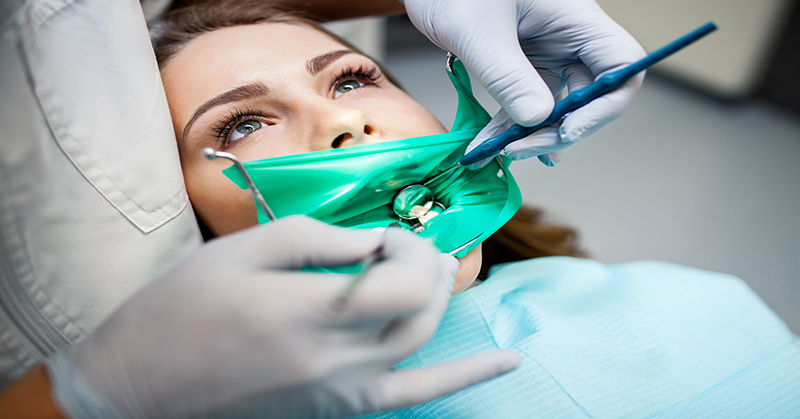Top Dental Implant Brands in the United States
When it comes to dental implants, finding a reputable and reliable dental implant service is crucial. Dental implants are a popular and effective solution for replacing missing teeth, providing individuals with improved aesthetics, functionality, and oral health.With the increase in demand for dental implants, numerous brands have emerged, providing a variety of options to meet the diverse needs and budgets of patients. Choosing the right dental implant brand is vital as it directly affects the success and longevity of the dental implant procedure. In this article, we will explore some of the top dental implant brands in the United States, known for their expertise, advanced technology, and exceptional patient care.Why Should You Have a Professional Dental Cleaning?
updated on November 15, 2023
Regular dental cleanings are a vital part of oral hygiene and overall health. Cleanings remove the plaque, bacteria, and tartar buildup that accumulates on teeth and leads to cavities, gum disease and bad breath over time if left untreated.
During a cleaning, the dental hygienist will examine your teeth state. They may take x-rays to check for issues like cavities or cracks. The hygienist then uses specialized tools to scrape away tartar above and below the gumline that daily brushing cannot reach. This involves scaling to remove built-up tartar and plaque. The scraping noises may be noticeable but it is not painful.
After scaling, a polishing is done using a powerful electric toothbrush to thoroughly clean all tooth surfaces. This removes any residual tartar and plaque and leaves teeth feeling smooth and fresh. The hygienist will also floss between each tooth, reaching debris that was missed by brushing. They may point out areas you should focus more on at home. Finally, a fluoride treatment is applied to strengthen enamel and prevent decay.Regular professional cleanings allow early detection and prevention of oral health problems. They help maintain your teeth, gums and smile in optimal condition.
Four types of dental cleaning:
There are several types of dental cleanings designed to target different oral health needs. The type of cleaning recommended depends on your unique oral health status. Your dentist will assess your needs and suggest the appropriate cleaning procedure and frequency to maintain your dental and gum health.
-
Regular cleanings (prophylaxis) are the standard preventive cleanings used to remove plaque and tartar from healthy teeth every 6 months. They help prevent issues like cavities and gum disease.
-
Scaling and root planing, also called deep cleanings, are more invasive and target gum disease. They scrape plaque and tartar below the gumline and smooth tooth roots to reduce infection. These take multiple 30-60 minute sessions to complete.
-
Periodontal maintenance cleanings are for patients already treated for gum disease. They are similar to deep cleanings but performed more frequently, usually every 3 months, to control inflammation and prevent further gum damage.
-
Gross debridement cleanings remove heavy plaque and tartar in patients with years of neglect. Hand tools and ultrasonic scalers thoroughly clean crowns and below gumlines. This allows for examination of issues concealed by neglect and is often part of full-mouth rehabilitation treatment plans.
-
How often should you have a dental cleaning?
The American Dental Association recommends getting a professional dental cleaning every 6 months for optimal oral health. This regular schedule allows removal of plaque and tartar before substantial buildup can cause issues. Without regular cleanings, plaque can harden into tartar over a 6-month period, which requires more intensive professional removal. Getting a thorough cleaning twice a year disrupts this plaque and tartar buildup process before lasting damage can occur to teeth and gums. In addition, biannual cleanings enable the dentist to fully examine the mouth and identify any early signs of concerning issues like tooth decay, gum disease or oral cancer.
However, certain individuals may require more frequent dental cleanings on a 3-4 month basis for optimal gum health and disease prevention. This includes people who are at higher risk for developing gum disease, such as those with certain medical conditions, smokers, people with poor diet, and others predisposed to oral health problems. More regular professional cleanings are important for at-risk patients because gum disease can have negative impacts on overall health if left unchecked. Closer monitoring allows early intervention and treatment. Patients should discuss an appropriate oral hygiene schedule with their dentist based on their unique oral health status and risk factors.
Choosing the Proper Dental Cleaning with Gum Disease:
If you have been diagnosed with gingivitis or early stages of periodontal disease, a regular dental cleaning alone is not sufficient treatment. More intensive deep cleaning procedures are required to properly address these gum conditions.
Gingivitis involves inflammation of the gums from plaque buildup. At first, the gum pockets are shallow. However, a standard cleaning above the gumline cannot eliminate irritants trapped below in these infected pockets. Without professional deep cleaning, bacteria continues to provoke swelling and recession, leading to deeper pockets over time.
Instead, patients with gingivitis or early periodontitis need scaling and root planing. This thoroughly cleans tooth surfaces as well as underneath the gums using specialized tools. All calculus is removed and pocket walls smoothed. This removes sources of inflammation and infection to resolve swelling and halt disease progression.
In addition, follow-up cleanings are scheduled more frequently, usually every 2-3 months. This allows the dentist to closely monitor healing and plaque control. Failing to address gum infection with deep cleaning means gingivitis can worsen into severe periodontitis with tooth and bone loss.
Therefore, while regular cleanings help maintain healthy gums, only deep scaling procedures properly treat gum inflammation. Patients with gingivitis or early periodontitis require this type of professional deep cleaning.

free&low-cost dental clinics
View Now
dental health

Dental Implants

Dental Implants
How to get free dental implants?
When it comes to dental implants, the cost can sometimes make you clench your teeth harder than the cold does. But fear not! There are a plethora of avenues to explore for low-cost or even free dental care. From state and local resources to dental schools and community health centers, let’s dive into where you can find that much-needed dental implants without breaking the bank.
Dental Implants
How to Get Your All-On-4 Dental Implants Without Breaking the Bank
In the United States, the cost of All-On-4 dental implants can vary significantly depending on your location. For instance, the cost in different states ranges from around $12,000 to $39,200 per arch. When seeking affordable options domestically, it's important to explore various clinics and compare their pricing. Additionally, some dental practices might offer flexible payment plans or dental loans to help manage the costs.
Dental Implants
What Are the Possible Risk Or Side Effects for Dental Implants?
Dental implants provide an excellent way to replace missing teeth and restore your smile. But as with any medical procedure, there are possible risks and side effects to consider before undergoing implant surgery. In this article, we aim to provide a comprehensive overview of dental implants - what they are, who is a suitable candidate, and most importantly, the potential risks and complications that can arise. By understanding both the benefits and possible downsides of implants, you can make a fully informed decision about whether they are the right choice for your individual needs and health profile.
Dental Implants
Why Are Implants So Expensive?
According to recent statistics, tooth loss is a prevalent issue, especially among older individuals. Adults between the ages of 20 to 64 have an average of 25.5 remaining teeth. However, factors such as age, smoking, lower income, and education level can contribute to a higher likelihood of tooth loss. In this article, we will explore dental implants in detail through the following aspects:
Dental Implants
Does Medicare Cover Dental Implants in 2024?
Medicare is an essential service for seniors, covering critical aspects of healthcare such as hospital stays, hospice care, and doctor services. However, when it comes to dental implants, a procedure known for its high costs, many beneficiaries find themselves questioning their coverage options. If you're contemplating this procedure, it's vital to know whether your plan offers coverage. This article aims to shed light on the coverage of dental implants under Medicare, focusing on Medicare Advantage plans.







